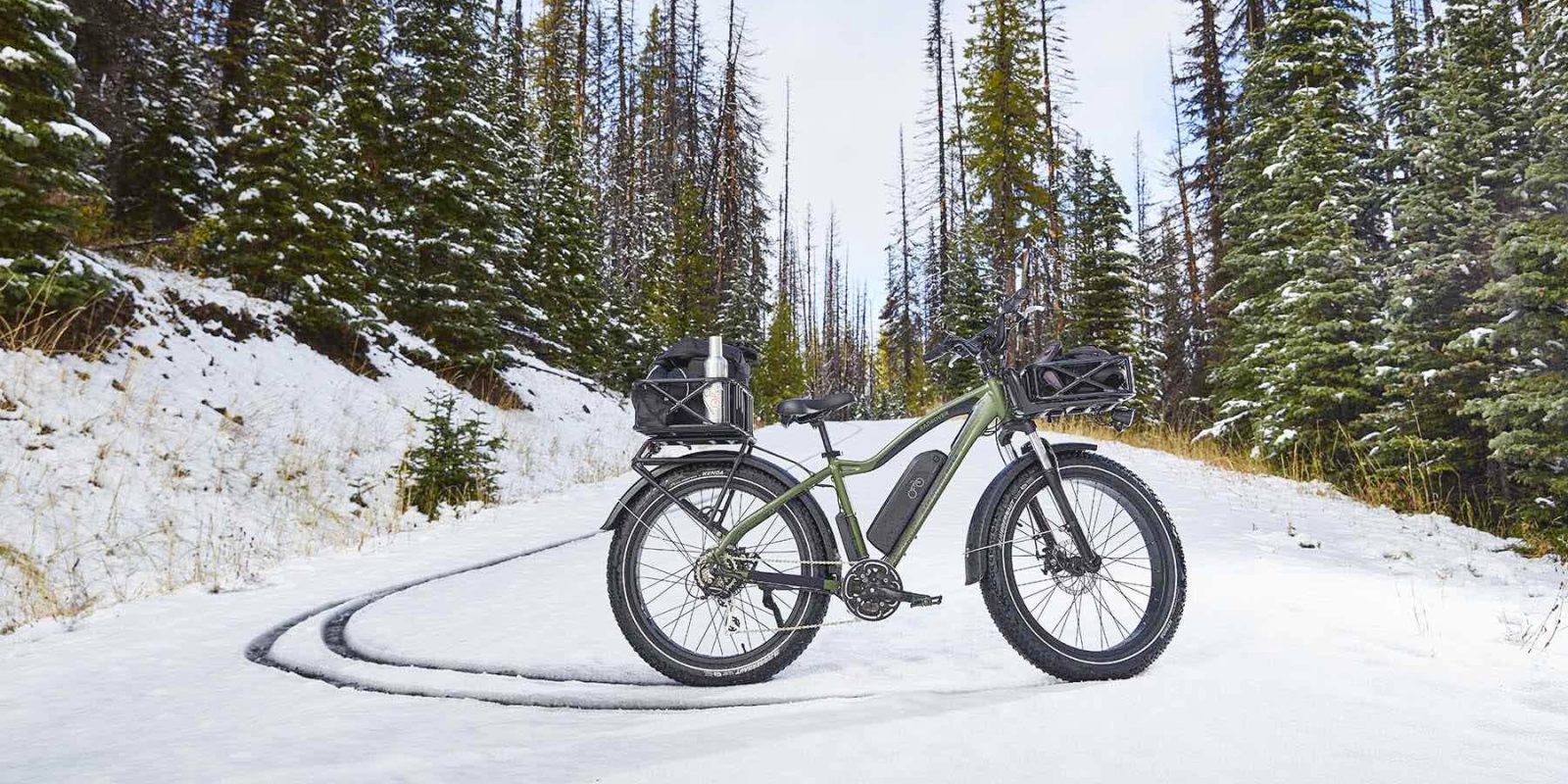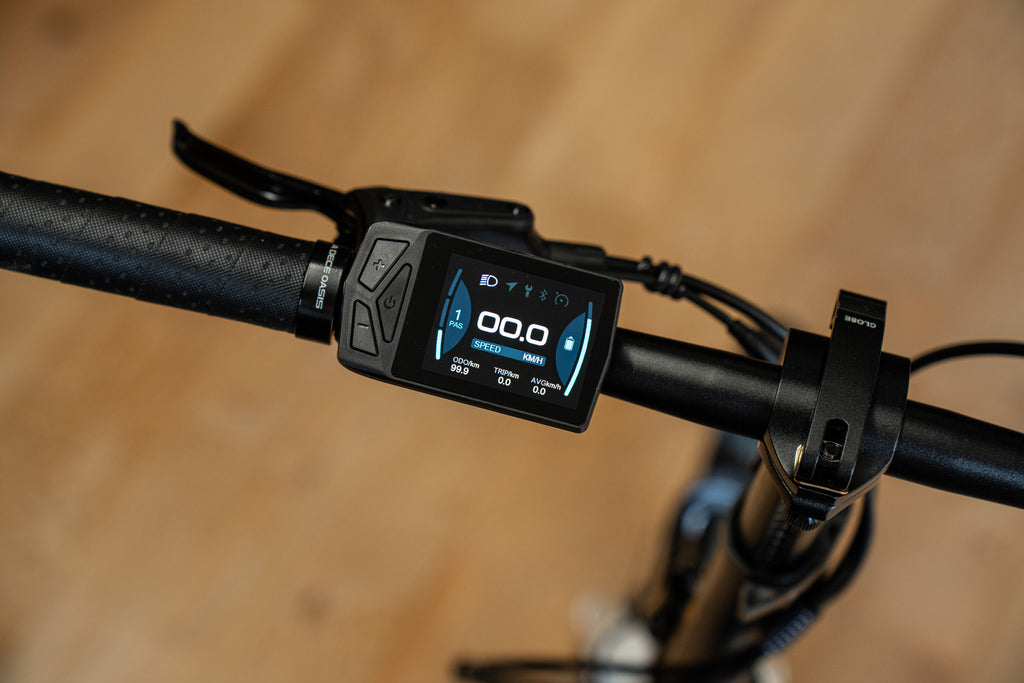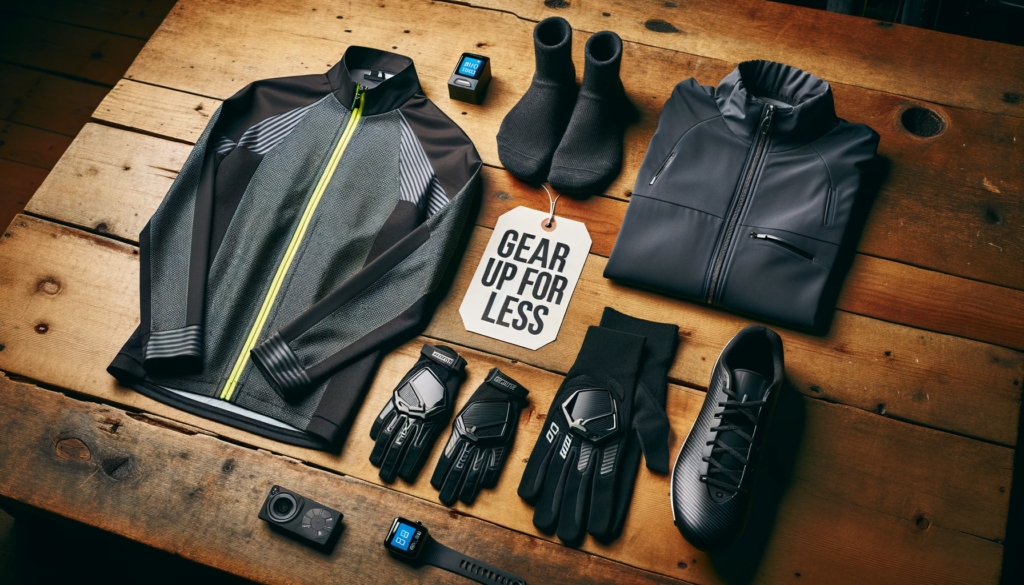To ensure optimal performance, prevent degradation, and maximize the lifespan of your e-bike battery this winter, it’s essential to properly store and maintain the battery.
When temperatures drop, take extra precautions to protect the battery from cold conditions. We’ll explore the best practices for e-bike battery maintenance during the winter months, allowing you to enjoy a smooth and reliable ride all season long. As the winter season approaches, it’s crucial to prioritize the care of your e-bike battery to avoid potential issues caused by cold weather.
By implementing the right maintenance strategies, you can safeguard your battery’s performance and prolong its longevity. In the following sections, we’ll delve into specific tips and techniques to help you prepare your e-bike battery for the winter, ensuring that it remains in optimal condition for your rides.

Credit: electrek.co
Understanding E-bike Battery Basics
The e-bike battery is a critical component that determines the performance and range of your electric bicycle. Understanding the basics of e-bike batteries is essential to ensure their optimal maintenance and care, especially during the winter months when battery performance can be affected. In this section, we delve into the various aspects of e-bike battery basics, including the types of e-bike batteries, the comparison between lithium-ion and lead-acid batteries, and the factors that influence battery performance.
Types Of E-bike Batteries
When it comes to e-bike batteries, there are primarily two types that dominate the market: lithium-ion and lead-acid batteries. Each type has its own set of characteristics and performance factors that need to be considered when maintaining them, particularly during the winter season.
Lithium-ion Vs. Lead-acid
Lithium-ion batteries are known for their lightweight, energy density, and longer lifespan compared to lead-acid batteries. On the other hand, lead-acid batteries are more affordable but heavier and less efficient in terms of energy storage and cycling.
Factors Affecting Battery Performance
Several factors can significantly impact the performance of e-bike batteries, particularly during winter. It’s crucial to be aware of these influences to maintain your battery in optimal condition.
- Temperature Sensitivity: E-bike batteries are sensitive to temperature variations, with extreme cold negatively impacting their performance. Understanding the temperature range within which your battery operates optimally is vital for its winter care.
- Charging Cycles: The number of charging cycles a battery can undergo before its capacity diminishes is an essential factor. It is important to manage charging cycles to prolong the lifespan of the battery, especially in cold weather.
Preparing Your E-bike Battery For Winter
Winter can be tough on e-bike batteries, causing decreased performance and potentially shortening their lifespan. To ensure your e-bike battery stays in top shape during the colder months, it’s essential to take proactive measures. Preparing your e-bike battery for winter involves inspecting battery connections, applying a protective coating, and following proper storage practices.
Inspecting Battery Connections
Before the onset of winter, thoroughly inspect the battery connections of your e-bike to ensure they are secure and free from corrosion. Use a small brush to gently clean the connections and terminals. Tighten any loose connections to prevent power loss and maintain optimal performance throughout the winter months.
Applying Protective Coating
Consider applying a protective coating to the battery terminals and connections. A thin layer of dielectric grease or corrosion inhibitor can shield the connections from moisture and corrosion, extending the lifespan of the battery. This extra step can help safeguard your e-bike battery against the harsh winter elements.
Proper Storage Practices
When storing your e-bike for an extended period during winter, avoid leaving the battery fully charged. Charge it to around 50% of its capacity and then disconnect it from the e-bike. Store the battery indoors, away from extreme cold, heat, or humidity. This prevents damage and preserves its charge for when you’re ready to hit the road again.
Tips For Extending Battery Life During Winter Riding
Winter can be a challenging time for e-bike batteries due to the cold weather, which can significantly reduce their performance and overall lifespan. However, with the right maintenance and care, you can ensure that your e-bike battery remains efficient and reliable throughout the winter season. Here are some essential tips for extending the battery life of your e-bike during winter riding.
Maintaining Optimal Charge Levels
One of the key factors in extending the lifespan of your e-bike battery during winter is to maintain optimal charge levels. Avoid letting the battery fully discharge, as this can lead to damage and reduce its overall capacity.
Partial Charges Vs. Full Charges
When charging your e-bike battery during the winter, it’s advisable to opt for partial charges over full charges. Regularly topping up the battery with partial charges, especially after each ride, can help maintain a consistent state of charge and prevent the battery from fully discharging.
Riding Techniques To Conserve Battery
During winter riding, it’s important to adopt riding techniques that can help conserve battery power. This includes maintaining a steady and moderate pace, avoiding sudden acceleration or braking, and choosing routes that are not overly hilly or challenging. Additionally, keeping the tire pressure at the recommended level can also help reduce rolling resistance and improve overall efficiency.
Utilizing Pedal-assist Efficiently
Optimizing the use of pedal-assist can significantly extend the battery life during winter riding. By actively pedaling and using the pedal-assist mode in conjunction with the electric motor, you can reduce the strain on the battery and maximize overall efficiency. This approach not only conserves battery power but also provides a more engaging riding experience.
Winter-specific E-bike Battery Care
When the temperature drops, it’s important to take special care of your e-bike battery to ensure optimal performance and longevity. Winter weather can have a significant impact on the health and lifespan of your battery, so it’s crucial to implement specific maintenance and care techniques. Here are some essential tips for winter-specific e-bike battery care:
Temperature Management Techniques
Extreme temperatures can adversely affect the performance and lifespan of your e-bike battery. To mitigate the impact of cold weather, consider storing your bike and battery in a temperature-controlled environment. If this is not possible, keep your battery at room temperature whenever it is not in use. Avoid exposing your battery to freezing temperatures, as it can lead to reduced capacity and performance.
Insulating The Battery Pack
In colder conditions, consider insulating the battery pack to help retain heat and maintain a consistent temperature. Use insulating materials or battery-specific covers to protect the battery from extreme cold.
Using Battery Covers
Battery covers can provide an additional layer of protection against the cold. Consider using a specialized battery cover designed for winter riding to keep the battery insulated and shielded from harsh weather conditions.
Post-ride Battery Care
After riding in cold temperatures, remove the battery from your e-bike and store it in a warm indoor space. Allow the battery to gradually warm up to room temperature to prevent damage from temperature differentials.
Allowing Battery To Reach Room Temperature
Before recharging your e-bike battery, ensure that it has reached room temperature. Charging a cold battery can lead to decreased efficiency and may affect its overall performance and longevity.
Troubleshooting And Maintenance Tips
Proper maintenance and care of your e-bike battery during winter is crucial to ensure its longevity and performance. By troubleshooting and following maintenance tips, you can prevent potential issues and optimize the efficiency of your battery.
Identifying Signs Of Battery Degradation
Regularly monitoring and identifying signs of battery degradation is essential in maintaining the optimal performance of your e-bike. Some common indicators of battery degradation include:
- Decreased range per charge
- Sluggish responsiveness
- Unexplained voltage drops
- Reduced overall battery capacity
Should you notice any of these signs, it’s crucial to take proactive measures to address the issue before it escalates further.
Seeking Professional Assistance When Necessary
While regular maintenance and troubleshooting can resolve many issues, there are instances where seeking professional assistance is necessary. Some scenarios in which professional help may be needed include:
- Severe battery degradation
- Unexplained performance issues despite regular maintenance
- Frequent error codes or warning indicators
Professional expertise can help diagnose complex battery issues and provide the necessary solutions to ensure the optimal performance and safety of your e-bike battery.
Frequently Asked Questions Of Essential Maintenance And Care Tips For Your E-bike Battery This Winter
How Should I Store My E-bike Battery For The Winter?
Store your e-bike battery in a cool, dry place. Charge it to around 50% and check it periodically. Avoid extreme temperatures. Disconnect the battery from the bike and store it separately. Recharge it every few months to maintain its health.
How Do I Prepare My E-bike For Winter?
1. Clean your e-bike to remove dirt and salt from the winter roads. 2. Use lubricant on the chain and other moving parts to prevent rust. 3. Check tire pressure and consider using winter-specific tires for better grip. 4. Protect the electrical components from moisture with covers or storage.
5. Store your e-bike indoors or in a sheltered area to protect it from harsh winter conditions.
How Do I Keep My Ebike Battery Healthy?
To keep your e-bike battery healthy, charge it regularly, avoid overcharging, store it at a moderate temperature, and if not using for a while, store it at 50% charge. Also, avoid deep discharges and charge the battery after each ride to prolong its lifespan.
How Do I Protect My Ebike Battery From Cold?
To protect your ebike battery from cold weather, store it in a dry, well-insulated location. Keep it fully charged and avoid exposing it to extreme temperatures. Use a battery cover or insulation to help maintain a consistent internal temperature. Regularly check the battery’s performance and stay mindful of weather conditions.
Conclusion
As the winter months approach, it’s crucial to take proper care of your e-bike battery. Following these maintenance tips will ensure your battery’s longevity and optimal performance during the colder season. By implementing these strategies, you can enjoy uninterrupted rides and extend the lifespan of your e-bike battery.




